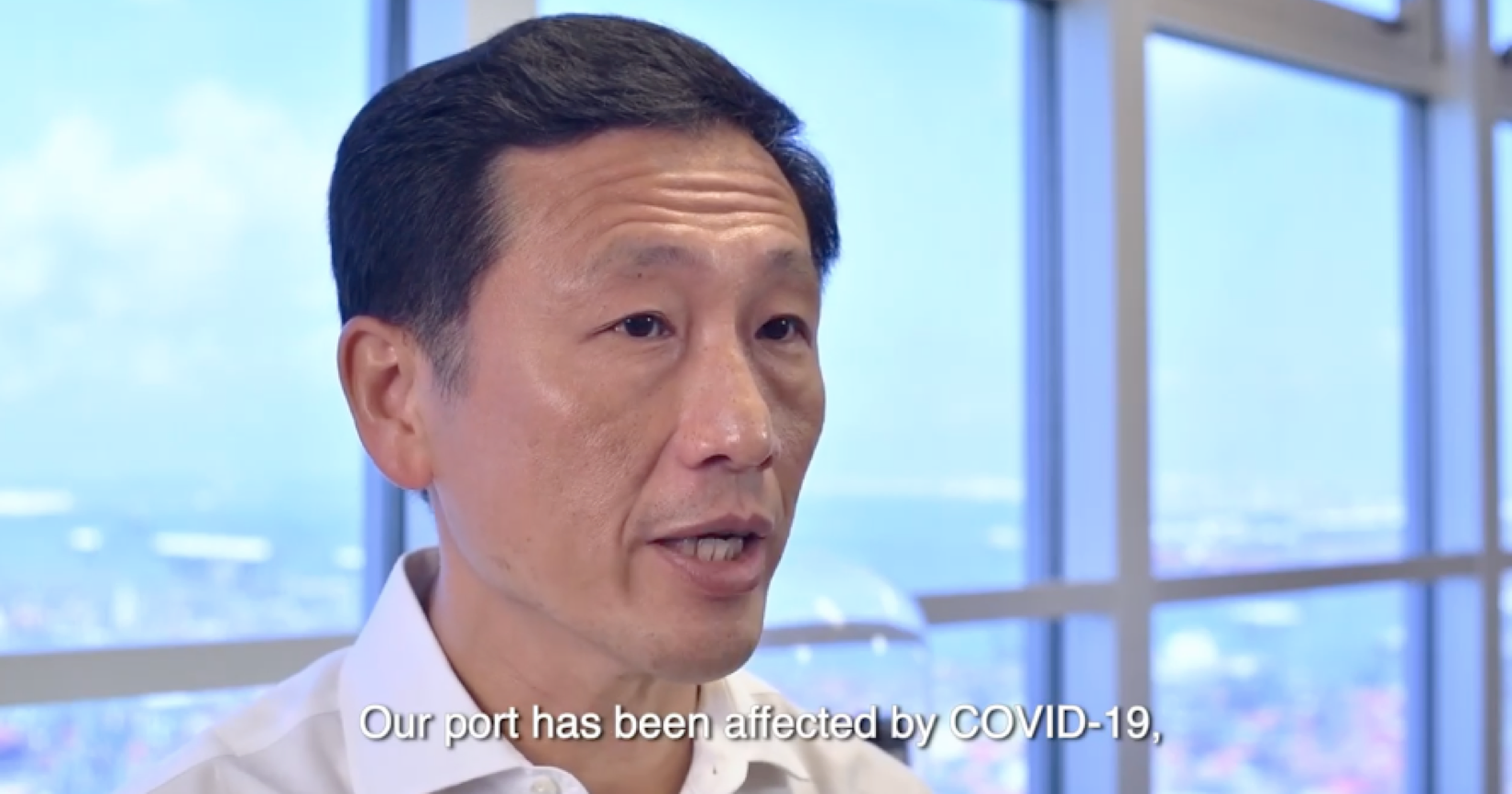Singapore has two "lungs" that take in oxygen and keep all the other parts of the body running -- which in this metaphor refers to the economy.
They are our seaport and airport. And while the Covid-19 has attacked both lungs, the Ministry of Transport (MOT) is doing everything it can to make sure both survive. That analogy courtesy of Ong Ye Kung in his maiden speech as Minister of Transport.
Seaport doing pretty well
In a speech on Aug. 7 at the MOT National Day Observance Ceremony, Transport Minister Ong Ye Kung noted that Singapore's seaport is doing relatively well despite the pandemic.
In the speech, which was released by MOT on Aug. 14, Ong noted that in the 1970s, Singapore's seaport was the second busiest in the world by volume, just behind Rotterdam. While today Rotterdam has slipped to 11th and Shanghai is the first, Singapore still remains number two.
This is due to Singapore's location at an important global interchange, where cargo arrives and is then connected to other shipping lines. The importance of the Straits of Malacca has not diminished in all this time.
While PSA anticipates a drop in volume due to Covid-19, it also intends to invest in new growth areas such as e-commerce. Added Ong:
"PSA is developing the Next-Generation Tuas Port and consolidating its operations there. By the 2040s, it plans to handle capacity of up to 65 million TEUs. PSA is also not just the Port of Singapore, but a network of ports across continents, adding resilience to Singapore’s hub status."
Airport facing tough challenges
While one lung is managing to cope, the other seems terminal.
Singapore's airport has been severely hit by the drop in passengers and the cuts in flights. Singapore has gone from over 1,000 flights a day to 150, and dropped from the seventh busiest airport in the world in terms of international passengers to 50th.
Unlike bigger countries, Singapore also has no domestic air travel to fall back on. After all, we don't need a plane to get from Jurong to Pasir Ris.
Ong said he was told that Covid-19 has set back air travel about 40 years, going back to 1981 when Changi Airport first opened.
Hunger and enterprise needed
However, Ong pointed out that Singapore has some advantages today as compared to the past.
Airlines are already secured, and now the main challenge is to restore passenger volume while containing the virus. Ong called for the same "hunger and enterprise" today as there was in the 1980s.
Singapore could consider opening up air travel to countries with similar virus transmission risk profiles to us, as long as sensible measures are taken to maintain health and safety.
Ong added that serving a 14-day isolation is a "major deterrent" to travellers, and said this could be replaced by a "rigorous testing regime", which other countries have already done so.
He further said:
"COVID-19 has decimated air travel and incapacitated one of our lungs, but the Singapore heart – our determination, dynamism and enterprise – is still pumping strong. Changi Airport will one day be full again, SIA planes will once again soar."
Here is the speech:
Top image from Ong Ye Kung's Facebook page.If you like what you read, follow us on Facebook, Instagram, Twitter and Telegram to get the latest updates.
